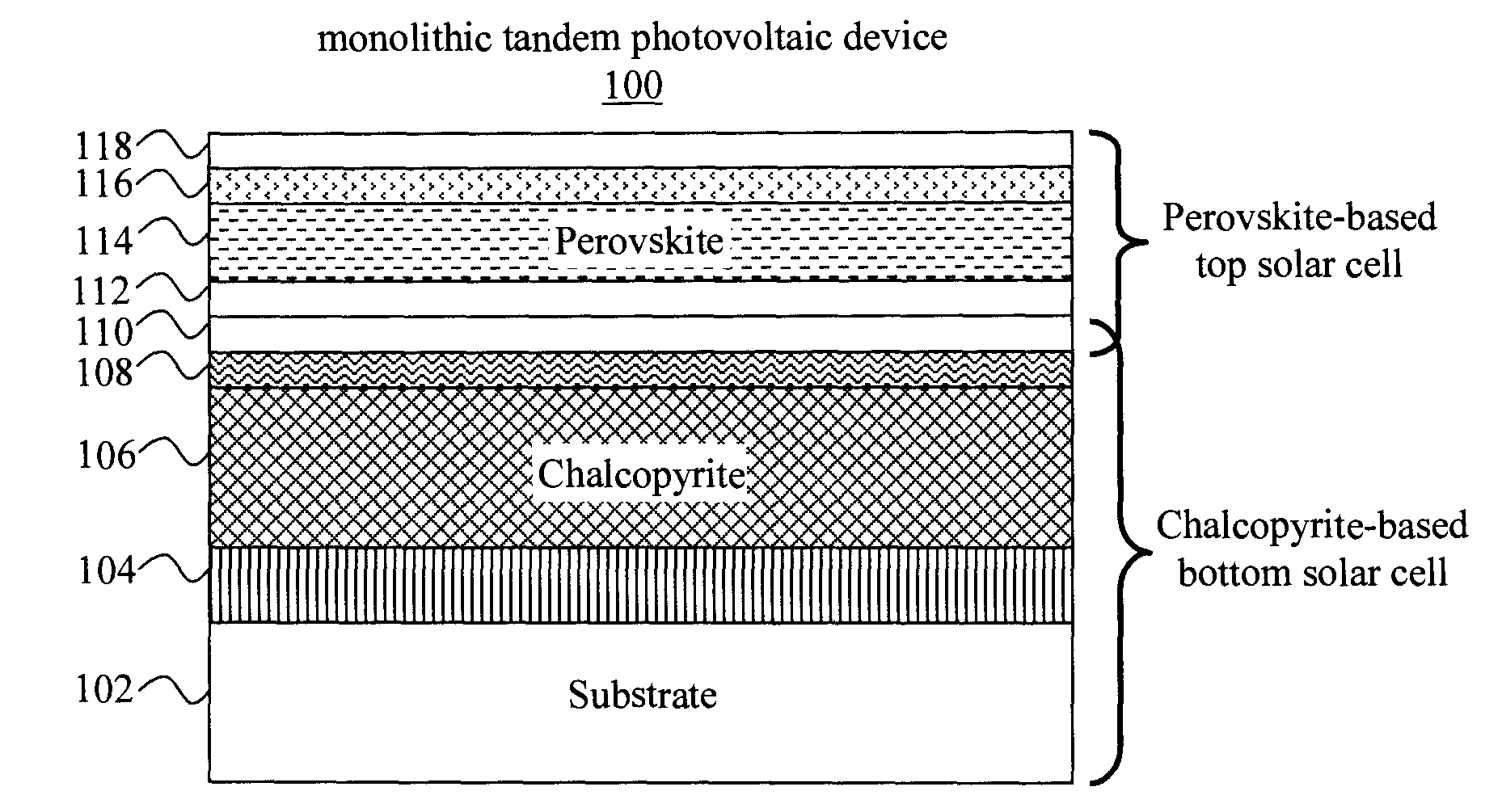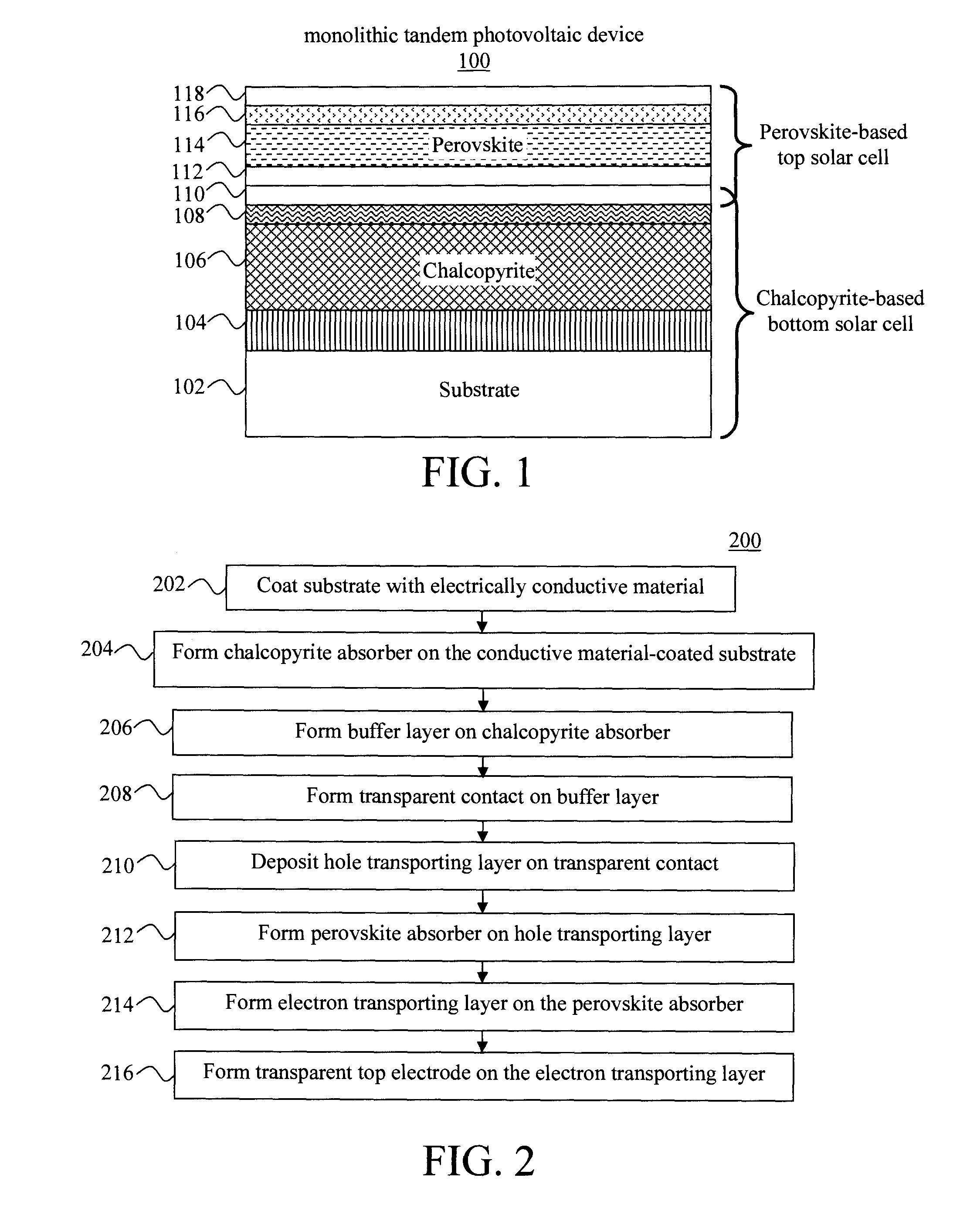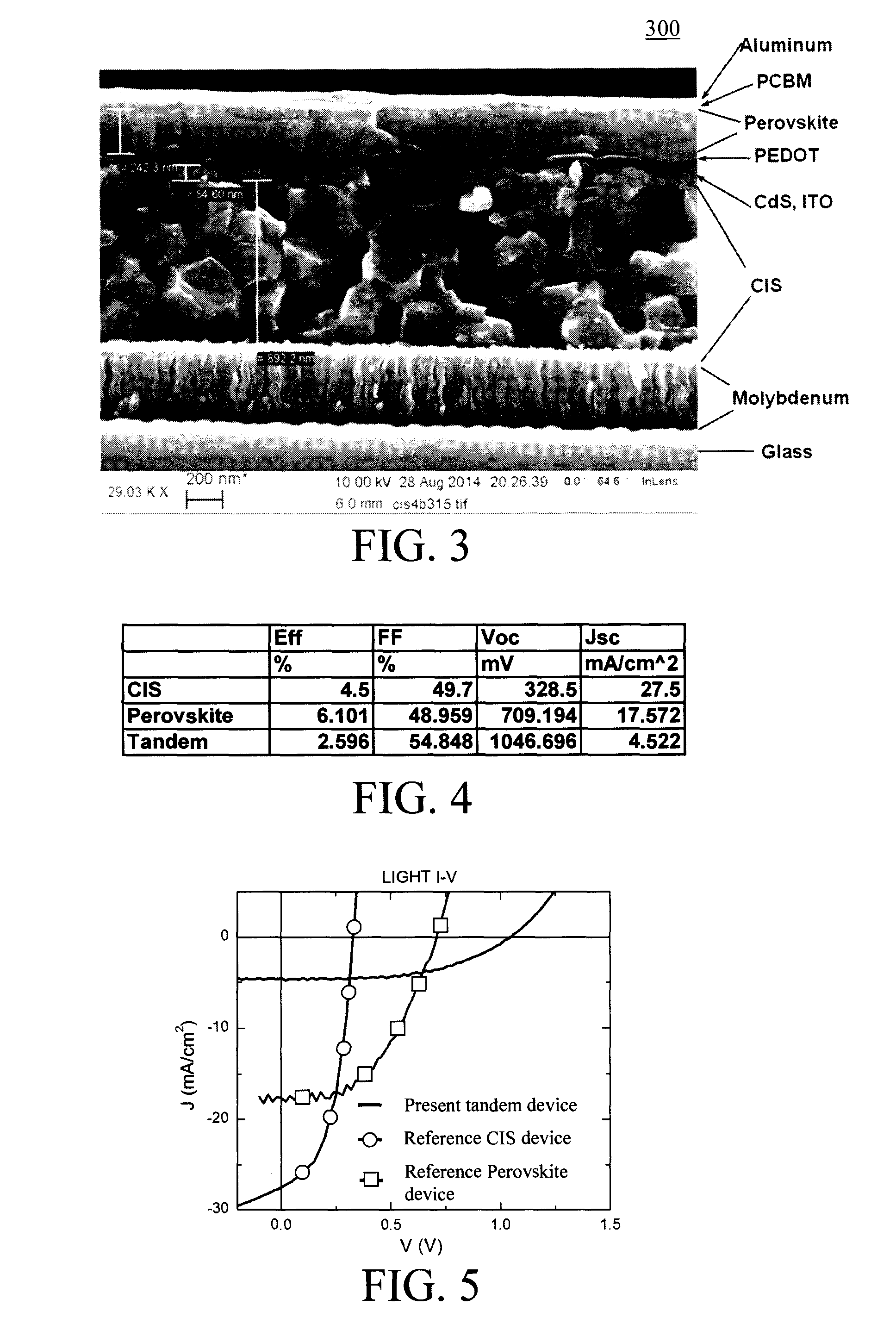Monolithic Tandem Chalcopyrite-Perovskite Photovoltaic Device
- Summary
- Abstract
- Description
- Claims
- Application Information
AI Technical Summary
Benefits of technology
Problems solved by technology
Method used
Image
Examples
Embodiment Construction
[0016]As provided above, due to their high efficiency at a relatively low band gap (about 1.15 electron volts (eV)) chalcogenide-based solar cells are ideal candidates for the bottom solar cells in a tandem device architecture. However, processing temperature constraints limit the options for what top solar cell may be formed on a chalcogenide-based bottom solar cell. Namely, once formed, the chalcogenide-based bottom solar cell should not be subjected to temperatures in excess of about 200 degrees Celsius (° C.).
[0017]Advantageously, the present techniques leverage a new generation of low-cost materials based on methylammonium metal (lead (Pb), tin (Sn)) halide (iodide, chloride, bromide) perovskites which require low processing temperatures (e.g., below 150° C. or even below 80° C.—see below). Perovskite solar cells can have efficiencies exceeding 15%. See, for example, Liu et al., “Efficient planar heterojunction perovskite solar cells by vapour deposition,” Nature vol. 501, 395-...
PUM
| Property | Measurement | Unit |
|---|---|---|
| Temperature | aaaaa | aaaaa |
| Temperature | aaaaa | aaaaa |
| Electrical conductivity | aaaaa | aaaaa |
Abstract
Description
Claims
Application Information
 Login to View More
Login to View More - R&D
- Intellectual Property
- Life Sciences
- Materials
- Tech Scout
- Unparalleled Data Quality
- Higher Quality Content
- 60% Fewer Hallucinations
Browse by: Latest US Patents, China's latest patents, Technical Efficacy Thesaurus, Application Domain, Technology Topic, Popular Technical Reports.
© 2025 PatSnap. All rights reserved.Legal|Privacy policy|Modern Slavery Act Transparency Statement|Sitemap|About US| Contact US: help@patsnap.com



